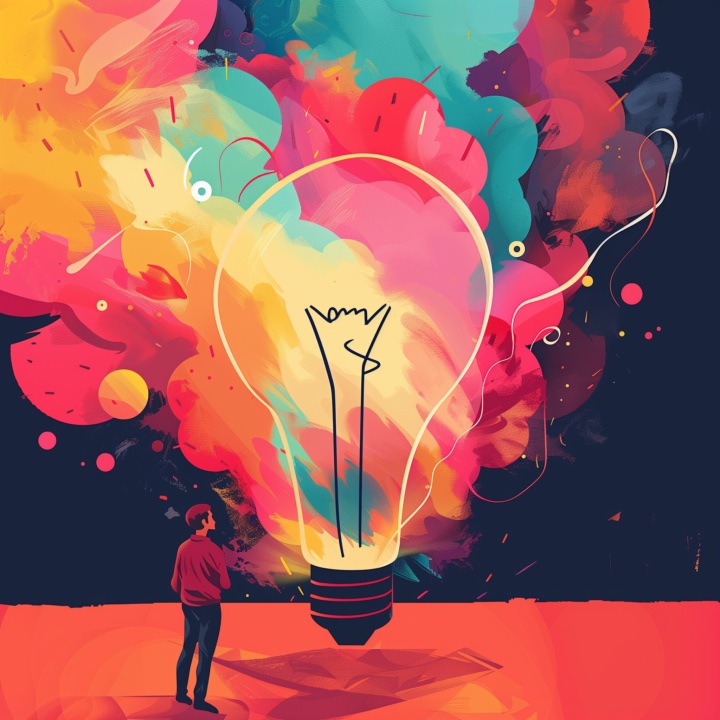The creative process is a fascinating journey that transforms an abstract idea into a tangible reality. Whether you’re an artist, writer, designer, or entrepreneur, understanding this process can significantly enhance your ability to bring your visions to life. Let’s dive into the steps of the creative process, from the initial spark of inspiration to the final execution.
Ideation: The Birth of an Idea
Every creative journey begins with ideation. This is the stage where ideas are conceived, often sparked by inspiration from various sources such as nature, conversations, books, or even day-to-day experiences. During this phase, it’s essential to keep an open mind and let your imagination run wild. Brainstorming, mind mapping, and freewriting are excellent techniques to generate a plethora of ideas without self-judgment.
Tips for Effective Ideation:
- Carry a Notebook: Jot down ideas as they come, no matter how trivial they may seem.
- Embrace Curiosity: Explore new experiences and perspectives to fuel your creative mind.
- Collaborate: Discuss your ideas with others to gain fresh insights and feedback.
Research and Development: Refining the Concept
Once you have a pool of ideas, it’s time to refine them. Research plays a crucial role in this phase, helping you understand the feasibility and potential impact of your concept. Look into similar projects, market trends, and potential challenges. This step is about transforming your raw idea into a viable concept.
Research Strategies:
- Competitive Analysis: Study existing works or products in your niche to identify gaps and opportunities.
- Audience Research: Understand your target audience’s needs and preferences to tailor your idea accordingly.
- Resource Planning: Assess the resources (time, budget, tools) required to bring your idea to life.
Planning: Crafting a Roadmap
With a refined concept in hand, the next step is planning. This involves outlining a clear roadmap that details each phase of the project, from start to finish. Effective planning ensures that your creative process stays organized and on track.
Key Elements of Planning:
- Timeline: Set realistic deadlines for each stage of the project.
- Milestones: Break down the project into smaller, manageable tasks.
- Resources: Allocate resources efficiently to avoid bottlenecks.
Execution: Bringing Ideas to Life
Execution is where the magic happens. This is the phase where your idea transforms into reality. Whether it’s painting a canvas, writing a novel, designing a product, or launching a startup, execution demands dedication, skill, and perseverance.
Execution Best Practices:
- Stay Focused: Minimize distractions and maintain a conducive working environment.
- Iterate and Improve: Be open to revising your work based on feedback and self-evaluation.
- Maintain Momentum: Keep the momentum going by setting short-term goals and celebrating small wins.
Review and Feedback: Refining the Final Product
Once the execution phase is complete, it’s crucial to review your work. This involves evaluating the final product against your initial goals and gathering feedback from peers or your target audience. Constructive criticism is invaluable for refining and perfecting your creation.
Review Techniques:
- Self-Evaluation: Critically assess your work to identify areas for improvement.
- Solicit Feedback: Seek feedback from trusted peers, mentors, or focus groups.
- Revise Accordingly: Use the feedback to make necessary adjustments and enhancements.
Launch and Reflection: Sharing and Learning
The final step in the creative process is launching your work into the world. This could mean publishing a book, unveiling an artwork, releasing a product, or presenting a business idea. After the launch, take time to reflect on the entire journey. Analyze what worked, what didn’t, and how you can apply these insights to future projects.
Post-Launch Activities:
- Marketing: Promote your work through various channels to reach your target audience.
- Gather Metrics: Collect data on your work’s performance and reception.
- Reflect: Contemplate the creative journey, celebrating successes and learning from challenges.
Conclusion
The creative process is an intricate dance of inspiration, hard work, and continuous improvement. By understanding and embracing each stage—ideation, research, planning, execution, review, and launch—you can turn your ideas into impactful realities. Remember, creativity is not just about the final product; it’s about the journey and growth that comes with it. Keep creating, keep evolving.
For more insights into the creative process and tips on executing your ideas, subscribe to our podcast, blog and join our creative community!



0 Comments